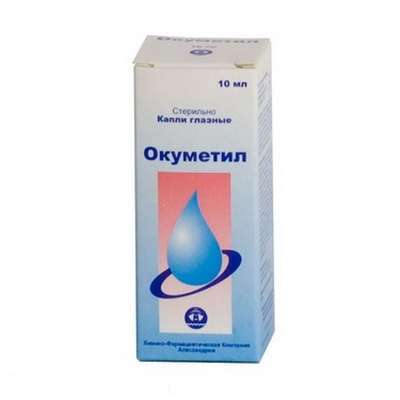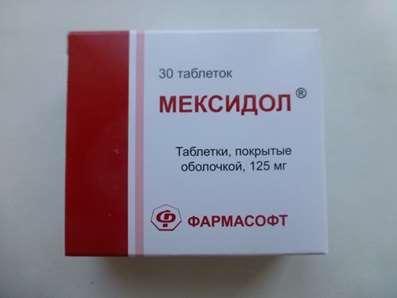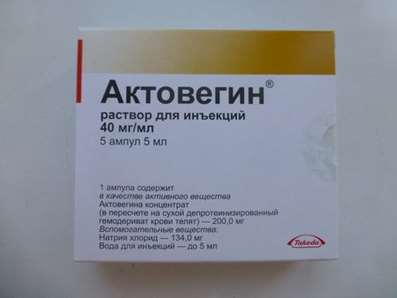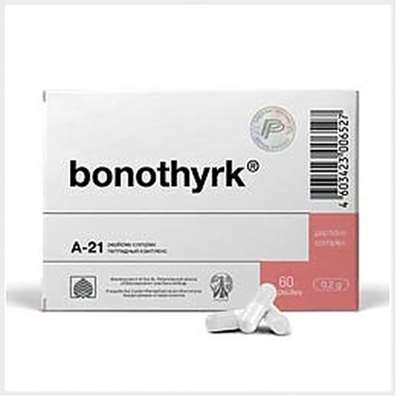Instruction for use: Likferr 100
I want this, give me price
Dosage form: Solution for intravenous administration
Active substance: Ferri (III) hydroxidum saccharosum complexum
ATX
B03AC02 Iron oxide saccharate
Pharmacological group
Iron preparation [Stimulators of hemopoiesis]
The nosological classification (ICD-10)
D50 Iron deficiency anemia: Iron deficiency in food; Anemia due to violations of hemoglobin synthesis and iron metabolism; Anemia of iron deficiency; Iron / folic deficiency anemia; Iron deficiency anemia
D62 Acute posthemorrhagic anemia: Hematopoietic disorders; Posthemorrhagic anemia; Posthemorrhagic anemia in newborns
D63.0 Anemia in neoplasm: Anemia in chronic diseases; Anemia due to radiation damage; Radiation anemia; Anemia in patients with solid tumors; Pernicious anemia
E61.1 Insufficiency of iron: Insufficient food intake of iron; Iron deficiency; Iron deficiency in women during pregnancy; Deficiency of iron and folic acid in pregnancy; Iron deficiency after surgery; Latent iron deficiency; Lack of iron during pregnancy and lactation; Inadequate intake of iron from food; Increased need for iron; Increased need for iron during menstruation; Disturbances of iron absorption from the digestive tract; Severe iron deficiency
Composition
Solution for intravenous administration - 1 ml
active substance: Iron (III) hydroxide sucrose complex (in terms of iron (III) 20 mg
Auxiliary substances: sodium hydroxide - up to pH 11; Water for injection - up to 1 ml
Description
Solution: colloidal, from red-brown to brown.
Pharmachologic effect
Mode of action - Anti-anemic.
Pharmacodynamics
The drug iron, regulates metabolic processes. It is a colloidal solution, which consists of spheroidal iron-carbohydrate nanoparticles. In the core (center) of each particle is iron (III) hydroxide. The core is surrounded by a shell of sucrose, which stabilizes the iron (III) hydroxide, slowly releases bioactive iron and stores the resulting particles in a colloidal solution. As a result, a complex is formed, the molecular mass of which is approximately 43 kDa, so that its excretion through the kidneys in an unchanged form is impossible. Iron (III) in this complex is associated with structures similar to natural ferritin.
The active substance of the preparation - iron (III) hydroxide, the sucrose complex - upon ingestion dissociates in the reticuloendothelial system into iron and sucrose. Due to the lower iron stability of the sugar, compared with transferrin, there is a competitive exchange of iron in favor of transferrin. As a result, about 31 mg of iron is transferred within 24 hours. Polycyclic iron (III) hydroxide is partially retained in the form of ferritin after complexing with the protein ligand-apopherritin of liver mitochondria. The hemoglobin index rises more quickly and with greater certainty than after therapy with drugs containing iron (II). Introduction 100 mg of iron (III) leads to an increase in hemoglobin by 2-3%; During pregnancy - by 2%. The toxicity of the drug is very low. The therapeutic index is 30 (200/7).
Pharmacokinetics
After a single intravenous injection of the preparation Likferr100® containing 100 mg of iron, Cmax of iron (on average 538 μmol) is reached 10 minutes after injection. T1 / 2 - 6 hours Vss is approximately 8 liters, which indicates a low distribution of iron in the liquid media of the body.
The excretion of iron by the kidneys within the first 4 hours after the injection is less than 5% of the total clearance. After 24 hours, the serum iron content returns to its original (before administration) value, and about 75% sucrose leaves the vascular bed.
Indication of the drug Likferr100
Iron deficiency (including iron deficiency and acute posthemorrhagic anemia) in patients with the need for rapid iron replenishment;
In patients who do not tolerate oral iron preparations;
The presence of GI diseases, in which oral iron preparations cannot be used.
Contraindications
Hypersensitivity to the components of the preparation Likferr100®;
Anemia not related to iron deficiency;
Presence of signs of iron overload (hemosiderosis, hemochromatosis) or disruption of the process of its utilization;
I trimester of pregnancy (see "Application in pregnancy and lactation").
With caution: bronchial asthma; eczema; Multivalent allergy; Allergic reactions to other parenteral iron preparations (due to a high risk of allergic reactions - see "Special instructions"); liver failure; Acute infectious diseases; Low iron binding capacity of serum and / or deficiency of folic acid; Diabetes mellitus (see "Special instructions"); Age under 18 years (due to insufficient data on safety and effectiveness).
Application of pregnancy and breastfeeding
The drug is contraindicated in the first trimester of pregnancy. In the II and III trimesters of pregnancy apply only if the intended benefit to the mother exceeds the potential risk to the fetus.
During lactation, the safety of the drug is not established. It is recommended to stop breastfeeding (if necessary, use the drug) or to cancel the drug.
Side effects
From the side of the central nervous system: dizziness, headache, loss of consciousness, paresthesia.
On the part of the CVS: palpitations, tachycardia, lowering blood pressure, collapoid conditions, a feeling of heat, flushing of the blood to the face, peripheral edema.
From the respiratory system: bronchospasm, dyspnea.
On the part of the digestive system: transient flavors (especially metallic taste in the mouth), diffuse abdominal pain, epigastric pain, diarrhea, taste distortion, nausea, vomiting.
From the skin: erythema, itching, rash, pigmentation, increased sweating.
From the musculoskeletal system: arthralgia, back pain, swelling of the joints, myalgia, pain in the limbs.
Allergic reactions: anaphylactoid reactions, edema of the face, swelling of the larynx.
Other: asthenia, pain in the chest, back, a feeling of heaviness in the chest, weakness, a feeling of malaise, pallor, fever, chills.
Local reactions: pain and swelling at the injection site (especially with extravasal ingestion of the drug), phlebitis, burning sensation, hematoma.
If any of these side effects are aggravated or any other side effects develop, the doctor should be informed.
Interaction
It is inadmissible simultaneous administration of the preparation Likferr100® with medicinal forms of iron for oral administration, tk. Decreases the absorption of iron from the digestive tract. Treatment with oral iron preparations can begin no earlier than 5 days after the last injection.
Likferr100® can be mixed in one syringe only with 0.9% sodium chloride solution. No other solutions for intravenous administration and therapeutic agents are added, since there is a risk of precipitation and / or other pharmaceutical interactions. Compatibility with containers of other materials than glass, PE and PVC, has not been studied.
If the patient is taking other drugs, you need to consult a doctor.
Dosing and Administration
IV (slowly by stream or drop infusion), as well as in the venous section of the dialysis system. The drug is not intended for intravenous administration. Impossible one-stage introduction of the full (cumulative) therapeutic dose of the drug.
Before the introduction of the first therapeutic dose, a test dose should be administered. If during the observation period there were intolerance phenomena, the drug should be discontinued immediately. Before opening the ampoule, it should be inspected for possible sediment and damage. You can use only a brown solution without sediment.
Drop introduction
Likferr100® is preferable to enter during drip infusion in order to reduce the risk of a pronounced decrease in blood pressure and the risk of getting the solution into the circumveneous area. Directly before infusion, Lycferr100® should be diluted with 0.9% sodium chloride solution in a ratio of 1:20 - for example 1 ml (20 mg iron) in 20 ml of 0.9% sodium chloride solution. The resulting solution is introduced at the following rate: 100 mg of iron - not less than 15 minutes; 200 mg for 30 minutes; 300 mg - for 1.5 hours; 400 mg for 2.5 hours; 500 mg for 3.5 hours. The maximum tolerable single dose of 7 mg of iron / kg should be administered for a minimum of 3.5 hours, regardless of the total dose of the drug.
Before the first dropping of the therapeutic dose of Lycferr100, a test dose should be administered: 1 ml of Lycferr100 (20 mg of iron) to adults and children weighing more than 14 kg and half of the daily dose (1.5 mg of iron / kg) to children with Body weight less than 14 kg, for 15 minutes. In the absence of adverse events, the remainder of the solution should be administered at the recommended rate.
Stream introduction
The preparation Likferr100® can also be administered as a undiluted I / O solution slowly, at a rate of 1 ml of the preparation Likferr100® (20 mg of iron) per minute - for example 5 ml of the preparation Likferr100® (100 mg of iron) is introduced within 5 minutes. The maximum volume of the drug should not exceed 10 ml of the drug Lycferr100 (200 mg of iron) per injection.
After injection, the patient is recommended to fix his hand for a while in the extended position.
Before the first jet injection of the therapeutic dose of Lycferr100, a test dose should be administered: 1 ml of Lycferr100 (20 mg iron) to adults and children weighing more than 14 kg and half of the daily dose (1.5 mg iron / kg) to children with Body weight less than 14 kg, for 1-2 minutes. In the absence of adverse events for the next 15 minutes of observation, the remainder of the solution should be administered at the recommended rate. After injection, the patient is recommended to fix his hand in an extended position.
Introduction to the dialysis system
Likferr100® can be injected directly into the venous section of the dialysis system, strictly following the rules described for IV injection.
Calculation of dose
Before the introduction, it is necessary to individually calculate the total iron deficiency in the body according to the following formula:
Total iron deficiency (mg) = body weight (kg) × (Hb normal - Hb patient (g / l) × 0.24 + deposited iron (mg).
For patients with a body weight of less than 35 kg
- amount of deposited iron = 15 mg / kg;
- the normal value of Hb = 130 g / l.
For patients with a body weight of more than 35 kg:
- amount of deposited iron = 500 mg;
- normal value of Hb = 150 g / l.
The coefficient is 0.24 = 0.0034 × 0.07 × 1000 (iron content in hemoglobin = 0.34%, blood volume = 7% of body weight, coefficient 1000 = transfer from grams to milgrams).
Then you should calculate the cumulative (course) dose of Likferr100®, which will need to be introduced to compensate for iron deficiency in the body, according to the following formula:
Total drug volume (ml) = Total iron deficiency (mg) / 20 mg / ml.
The approximate values of the total iron deficiency and the total volume of the drug for introduction to the course of therapy are given in the table.
Table
The total volume of the preparation Likferr100® for treatment
| Body weight, kg | The cumulative therapeutic dose of the preparation Likferr100® for administration | |||||||
| Hb 60 g/l | Hb 75 g/l | Hb 90 g/l | Hb 105 g/l | |||||
| mg Fe | ml | mg Fe | ml | mg Fe | ml | mg Fe | ml | |
| 5 | 160 | 8 | 140 | 7 | 120 | 6 | 100 | 5 |
| 10 | 320 | 16 | 280 | 14 | 240 | 12 | 220 | 11 |
| 15 | 480 | 24 | 420 | 21 | 380 | 19 | 320 | 16 |
| 20 | 640 | 32 | 560 | 28 | 500 | 25 | 420 | 21 |
| 25 | 800 | 40 | 700 | 35 | 620 | 31 | 520 | 26 |
| 30 | 960 | 48 | 840 | 42 | 740 | 37 | 640 | 32 |
| 35 | 1260 | 63 | 1140 | 57 | 1000 | 50 | 880 | 44 |
| 40 | 1360 | 68 | 1220 | 61 | 1080 | 54 | 940 | 47 |
| 45 | 1480 | 74 | 1320 | 66 | 1140 | 57 | 980 | 49 |
| 50 | 1580 | 79 | 1400 | 70 | 1220 | 61 | 1040 | 52 |
| 55 | 1680 | 84 | 1500 | 75 | 1300 | 65 | 1100 | 55 |
| 60 | 1800 | 90 | 1580 | 79 | 1360 | 68 | 1140 | 57 |
| 65 | 1900 | 95 | 1680 | 84 | 1440 | 72 | 1200 | 60 |
| 70 | 2020 | 101 | 1760 | 88 | 1500 | 75 | 1260 | 63 |
| 75 | 2120 | 106 | 1860 | 93 | 1580 | 79 | 1320 | 66 |
| 80 | 2220 | 111 | 1940 | 97 | 1660 | 83 | 1360 | 68 |
| 85 | 2340 | 117 | 2040 | 102 | 1720 | 86 | 1420 | 71 |
| 90 | 2440 | 122 | 2120 | 106 | 1800 | 90 | 1480 | 74 |
Multiplicity of the introduction is determined by the doctor, but not more often than every other day.
Adults, incl. Elderly (over 65 years) patients: 5-10 ml Likferr100® (100-200 mg iron) 1-3 times a week.
Children: there are only limited data on the use of the drug in children. If necessary, it is recommended to inject no more than 0.15 ml of the preparation Likferr100® (3 mg of iron) / kg 1-3 times a week, depending on the indicator of Hb.
The maximum tolerable single dose for adults, incl. Elderly (over 65 years) patients
For stream administration: 10 ml of Likferr100® preparation (200 mg of iron), duration of administration - at least 10 minutes.
For drip administration: Depending on the indications, a single dose can reach 500 mg of iron. The maximum permissible single dose is 7 mg of iron / kg and is administered once a week, but not more than 500 mg of iron.
As a rule, large doses are associated with a higher incidence of adverse events.
In the case where the total therapeutic dose exceeds the maximum allowable single dose, fractional administration of the drug is recommended.
If, 1-2 weeks after the beginning of treatment with Lycferr100®, there is no improvement in hematological parameters, it is necessary to revise the initial diagnosis.
Calculation of the dose for replenishing the iron content after blood loss or autologous blood donation
The dose of Likferr100®, necessary to compensate for iron deficiency, is calculated according to the formula below.
If the amount of lost blood is known: iv injection of 200 mg of iron (10 ml of the preparation Likferr100®) leads to the same increase in the concentration of Hb as the transfusion of 1 unit of blood (400 ml with a concentration of 150 g / l Hb).
The amount of iron that must be replenished, mg = number of units of lost blood × 200 or the required volume of Lycferr100® preparation, ml = number of units of lost blood × 10.
If the Hb content is reduced: the previous formula should be used, provided that the iron depot is not required to replenish.
The amount of iron to be replenished, mg = body weight, kg × 0.24 × (normal Hb-Hb index of patient), g / l.
For example: body weight - 60 kg, deficiency Hb = 10 g / l - necessary amount of iron = 150 mg, necessary volume of preparation Likferr100® = 7.5 ml.
Patients with chronic renal diseases who are on hemodialysis and receive additional treatment with erythropoietin
The drug is administered strictly IV. The injection itself should be administered as slowly as possible, the duration of administration increases as the dose increases. The procedure is not particularly difficult for hemodialysis patients. They usually have suitable I / O access. The drug is administered in a 0.9% solution of sodium chloride for at least 15 minutes during the last 2 hours of the hemodialysis session.
Absolute iron deficiency (anemia correction phase)
- 30-50 mg of iron / dialysis session
or
- 1000 mg of iron for 6-10 weeks.
Supportive therapy phase
Assign different doses, in different modes:
- 10-25 mg of iron / dialysis session
or
- 100 mg of iron / once a month (depending on serum ferritin concentration).
Hemoglobin Correction Phase
- 150 mg of iron to increase the concentration by 10 g / l.
Overdose
Symptoms: decreased blood pressure (signs of collapse occur within 30 minutes), symptoms of hemosiderosis.
Treatment: symptomatic, if necessary - drugs that bind iron (chelators), for example deferoxamine.
Special instruction
It is necessary to strictly adhere to the speed of administration of the preparation Likferr100® (with rapid administration of the drug, blood pressure can decrease). A higher incidence of unwanted adverse reactions (especially - lowering blood pressure), incl. And heavy, is associated with an increase in dose. Thus, the time of administration of the drug given in the section "Method of administration and dose" should be strictly observed, even if the patient does not receive the drug in the maximum tolerable single dose.
During the injection of Likferr100®, it is necessary to monitor the parameters of hemodynamics.
Likferr100® should be given only to those patients whose diagnosis of anemia is confirmed by appropriate laboratory data (for example, the serum ferritin determination results or hemoglobin and hematocrit indicators, the number of red blood cells and their parameters-the mean red blood cell volume or the mean hemoglobin content in the erythrocyte).
IV iron preparations can cause allergic or anaphylactoid reactions, which can be potentially life-threatening. Patients with bronchial asthma, eczema, atopic diseases, polyvalent allergies, allergic reactions to other iron preparations, as well as patients with low serum iron binding ability and / or folic acid deficiency, have an increased risk of developing allergic or anaphylactoid reactions (see "Contraindications" Carefully).
Studies conducted in patients with hypersensitivity reactions to iron dextran showed no complications during the treatment with the drug.
Avoid penetration of the drug into the circumvallic space, because The ingestion of Lycferr100® outside the vessel results in tissue necrosis and brown staining of the skin. If this complication develops, it is recommended (if the needle is still in the vessel) to introduce a small amount of 0.9% sodium chloride solution. To accelerate the excretion of iron and prevent its further penetration into surrounding tissues, it is recommended to apply heparin-containing preparations to the injection site (gel or ointment is applied lightly without rubbing).
It is inadmissible to administer the drug in the presence of sediment.
In 1 ml of the preparation Likferr100 ® contains from 260 to 340 mg of sucrose. These data should be taken into account in patients with diabetes mellitus. With the drip administration of the drug, depending on the indications, the maximum tolerable single dose can reach 500 mg of iron, which corresponds to the administration of 8.5 g of sucrose. When recalculating this amount of carbohydrates in XE (1 XE = 12 g carbohydrates), it corresponds to 0.7 XE.
During therapy with stimulants of erythropoiesis, iron metabolism is controlled by such parameters as serum ferritin concentration and iron transferrin saturation (NTZ). Determination of the number of hypochromic erythrocytes and hemoglobin concentration in reticulocytes helps to decide whether to prescribe iron IV drugs when there is hyperfertinemia and low NTH. The risk of iron overload is compensated for by blood loss during procedures associated with dialysis (1-3 grams of iron per year are lost). The concentration of serum ferritin should be monitored regularly. The concentration of serum ferritin above 500 μg / l (with a normal C-reactive protein index), which persists for a long time, may indicate iatrogenic iron overload. In such cases, iron preparations should be discontinued (therapy with stimulants of erythropoiesis should continue). Due to the fact that iron stimulates the growth of most microorganisms, iron preparations should be abolished when developing acute bacterial infections. Also, iron iv therapy should be performed with caution in patients with permanent dialysis catheters.
Influence on the ability to drive vehicles or work with potentially dangerous mechanisms. Care should be taken when driving a vehicle or working with potentially dangerous machinery.
Release Form
Solution for intravenous administration, 20 mg / ml. 5 ml per ampoule of light-protective glass with a colored dot and a notch or a colorless glass with a color fracture ring or with a colored dot and a notch. Ampoules are additionally applied one, two or three color rings or without additional color rings.
At 5 amp. In a planar cell box with a lid integral of PVC film or without a lid. 1 contour squad packaging in a pack of cardboard.
By 3 amp. In contour acrylic packing from a film of PVC or polyethylene terephthalate or from a tape polystyrene. 1, 2 or 8 contour mesh packages in a pack of cardboard.
5 ml in bottles of colorless glass, sealed with rubber stoppers and crimped with aluminum caps, equipped with plastic caps with an inscription in English "FLIP OFF" or without an inscription. 1 fl. In a pack of cardboard. 3 or 5 fl. In a tripod of cardboard and a pack of cardboard.
Manufacturer
1. Help SA, 45500, Greece, Pedini Ioannina.
ZAO "FarmSirma" Soteks ". 141345, Russia, Moscow region
2. Samrudh Pharmaceuticals PVT. Ltd., J-174, MIDC, Tarapur, Boysar, Diet Thain, 401506, India.
ZAO "FarmSirma" Soteks ". 141345, Russia, Moscow region
3. Emkure Pharmaceuticals Ltd., Site No. P-1, ITBT. Park, India.
ZAO "FarmSirma" Soteks ". 141345, Russia, Moscow region
The owner of the registration certificate: ZAO "FarmSirma" Soteks ". Claims of consumers should be sent to the address of ZAO "FarmFirma Soteks".
Conditions of supply of pharmacies
On prescription.
Storage conditions of the drug Likferr100
At a temperature not higher than 25 ° C (do not freeze).
Keep out of the reach of children.
Shelf life of the drug Likferr100
Solution for intravenous administration of 20 mg / ml - 2 years.
Do not use after the expiry date printed on the package.

 Cart
Cart





